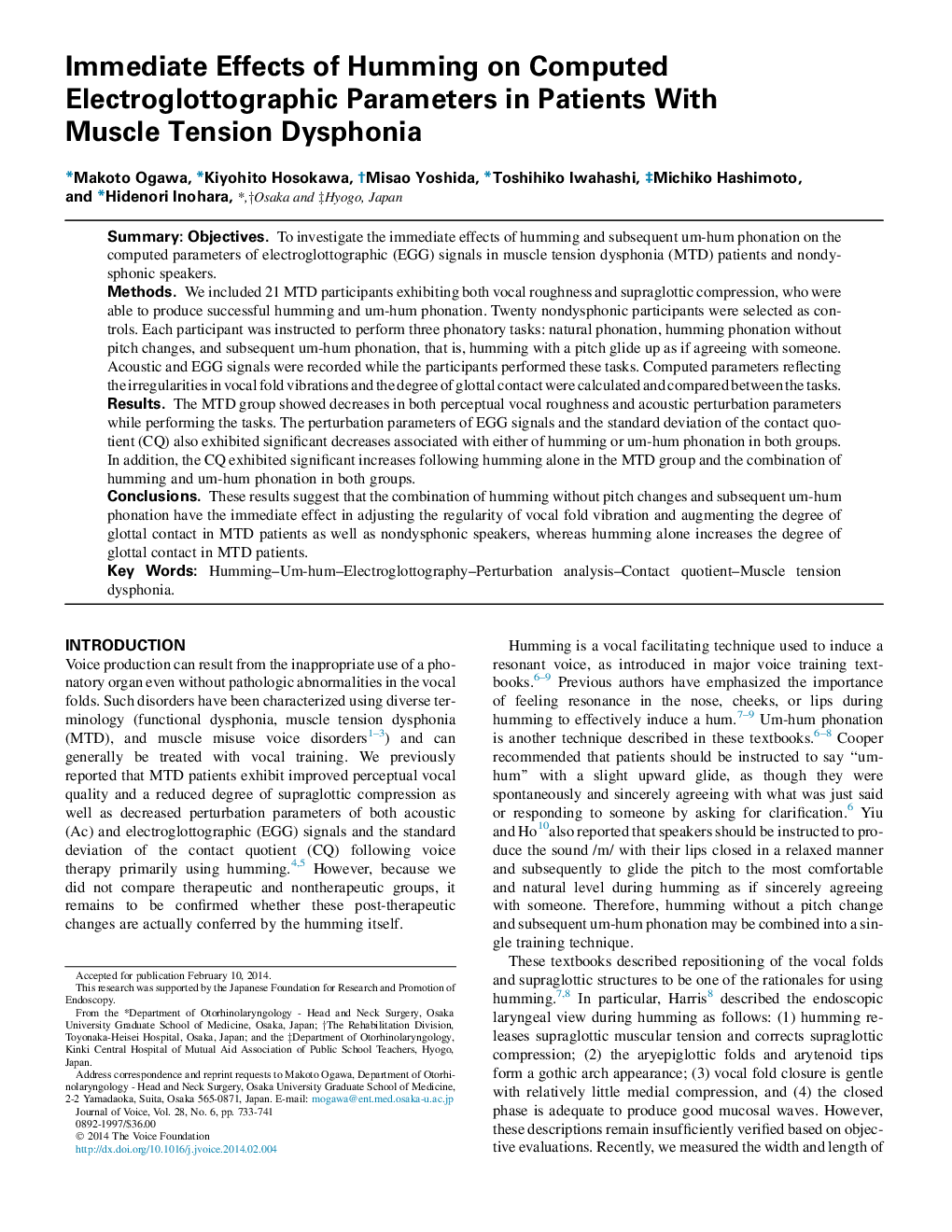| Article ID | Journal | Published Year | Pages | File Type |
|---|---|---|---|---|
| 1101611 | Journal of Voice | 2014 | 9 Pages |
SummaryObjectivesTo investigate the immediate effects of humming and subsequent um-hum phonation on the computed parameters of electroglottographic (EGG) signals in muscle tension dysphonia (MTD) patients and nondysphonic speakers.MethodsWe included 21 MTD participants exhibiting both vocal roughness and supraglottic compression, who were able to produce successful humming and um-hum phonation. Twenty nondysphonic participants were selected as controls. Each participant was instructed to perform three phonatory tasks: natural phonation, humming phonation without pitch changes, and subsequent um-hum phonation, that is, humming with a pitch glide up as if agreeing with someone. Acoustic and EGG signals were recorded while the participants performed these tasks. Computed parameters reflecting the irregularities in vocal fold vibrations and the degree of glottal contact were calculated and compared between the tasks.ResultsThe MTD group showed decreases in both perceptual vocal roughness and acoustic perturbation parameters while performing the tasks. The perturbation parameters of EGG signals and the standard deviation of the contact quotient (CQ) also exhibited significant decreases associated with either of humming or um-hum phonation in both groups. In addition, the CQ exhibited significant increases following humming alone in the MTD group and the combination of humming and um-hum phonation in both groups.ConclusionsThese results suggest that the combination of humming without pitch changes and subsequent um-hum phonation have the immediate effect in adjusting the regularity of vocal fold vibration and augmenting the degree of glottal contact in MTD patients as well as nondysphonic speakers, whereas humming alone increases the degree of glottal contact in MTD patients.
